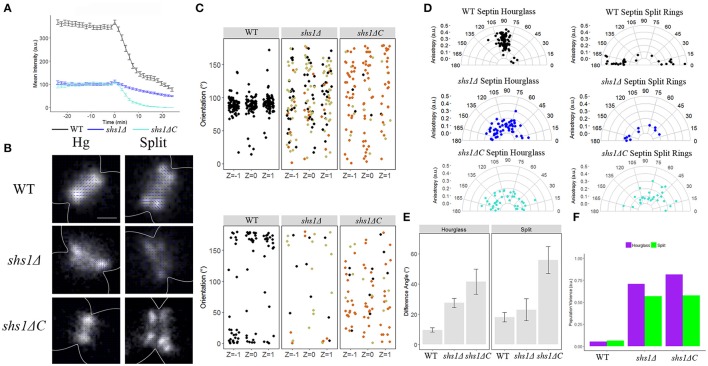Figure 4.
The septin Shs1 is required for the proper organization of all septin higher order structures. (A) Septin intensity of GFP-Cdc3 in wild-type (black) and shs1Δ (blue) over the course of septin ring splitting (time = 0). Error bars represent standard error for each time point (N = 100 cells). (B) Representative polarization images of wild-type containing pScCDC12-conGFP, shs1Δ containing pScCDC12-conGFP, and shs1ΔC containing pScCDC12-conGFP in the hourglass and split structure. The blue lines represent the calculated dipole orientation and their length is scaled according to anisotropy. Scale bar 0.5 μm. (C) Scatter plot of net dipole orientations for individual hourglass and split septin rings in three different focal planes. Color scale indicates visible phenotypes of septin rings [broken ring (tan), improper ring size (orange), (hourglass N > 55 cells, split rings N > 10 cells)]. (D) Polar plots of net dipole orientations for individual hourglass and split septin rings scaled by anisotropy (hourglass N > 55 cells, split rings N > 10 cells). (E) Difference in net orientation measures between top and bottom focal planes for hourglass and split structures. Error bars denote standard error. (F) Population variance in hourglass and split ring structures.

